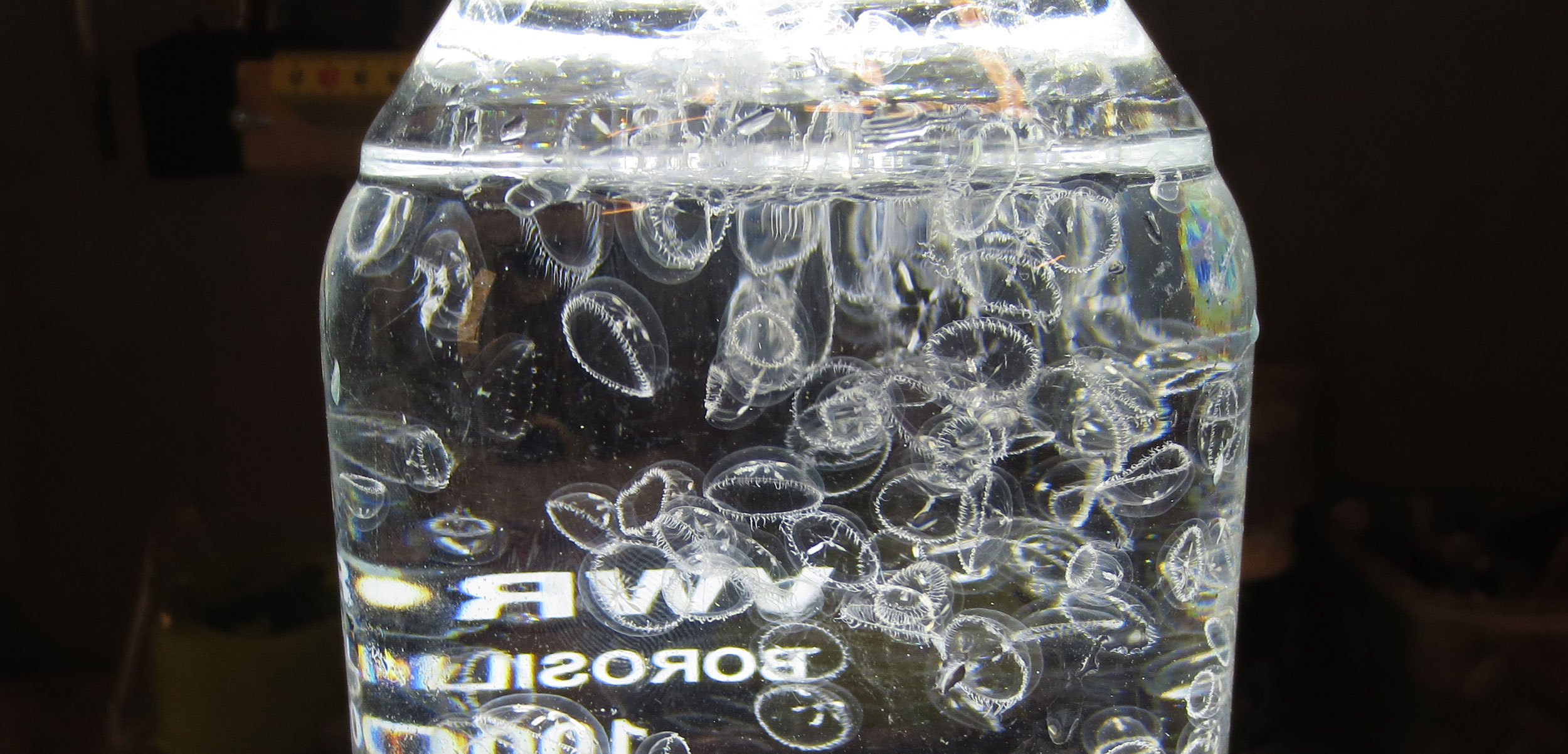Jellyfish Threaten Norway’s Salmon Farming Industry
A Norwegian fish farm has been hit hard by tiny jellyfish.
Article body copy
In northern Norway, at the western side of the Ryggefjord fjord, lies a fish farm with two large open-net pens floating some 200 meters above the seafloor. Run by salmon farming juggernaut Cermaq, the operation has been churning out Atlantic salmon since 1999. But times may be changing for what has been a profitable business.
In September 2015, the farm experienced its fourth mass die-off of salmon since 2002. And according to a paper released in late 2017, the killers appear to be jellyfish.
When the September die-off hit, ecologist Claudia Halsband from Akvaplan-niva a private research firm, hurried to the fjord and spent a week sampling the waters. Halsband and a team of scientists from the firm and Norwegian universities had spent the summer in Ryggefjord, working the case of those earlier mass mortalities, though without much luck. But when she returned two months later, Halsband finally found something out of the ordinary.
Lurking in the water, Halsband discovered that a jellyfish, Dipleurosoma typicum, was blooming along the coast. The jellyfish is often found in the North Atlantic, and is thought to have a boreal-circumpolar range, but this was the first observation in Norwegian waters. Cermaq veterinarians had originally floated the idea that jellyfish were behind the deaths given the water’s cloudy appearance when the deaths occurred, but until now they hadn’t been able to show that the jellyfish were actually harming the fish.
Closer inspection of these jellyfish showed that they—unlike the jellyfish species observed in the region in the summer—were indeed hurting the salmon. The Dipleurosoma typicum jellyfish were likely wounding the salmon with their stingers, causing lesions that Halsband believes increased the spread of tenacibaculosis, a common bacterial disease in fish farms. Despite the lack of earlier evidence, these jellyfish were likely also the culprits behind the die-offs in 2012 and 2014.
In the past decade, destructive and costly blooms of other jellyfish species have hit salmon farms in Ireland, Scotland, and northern Norway. In many cases, these blooms clogged fish nets or pens, or suffocated fish. To put it succinctly, “jellies and salmon are not a good mix,” says Halsband.
Robert Condon, a jellyfish expert, says the big scientific question is how jellyfish populations will respond to climate change, though finding an answer will be difficult without more research. “There are approximately 500 jellyfish population experts in the world,” he says, compared with “tens of thousands of scientists in fisheries.”
But now, with jellyfish threatening a multibillion-dollar industry, there’s significant incentive for aquaculture companies and scientists to spend the time and money to learn.
Globally, jellyfish populations tend to rise and fall over decades, Condon says. In general, jellyfish populations are currently in decline. But there are key spots—such as Norwegian fjords—where jellyfish populations are increasing, he says.
If that continues to be the case, Halsband says, it could affect where companies put their fish farms. It’s still unknown whether Dipleurosoma typicum were always in Ryggefjord, or if they’re foreign invaders, given that the first mass die-off occurred just three years after operations at the fish farm began. If companies can predict when and where a bloom is likely to strike, they can avoid operating farms there in the first place, ultimately saving their salmon.

